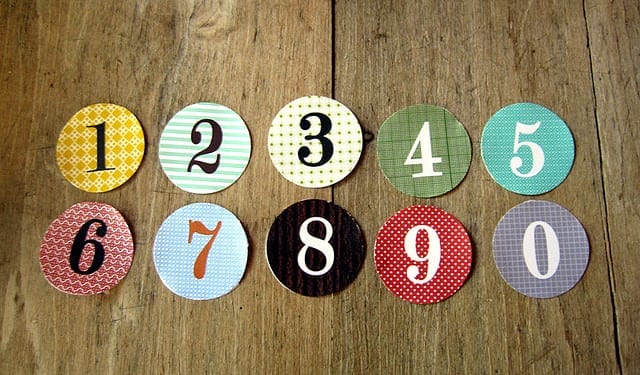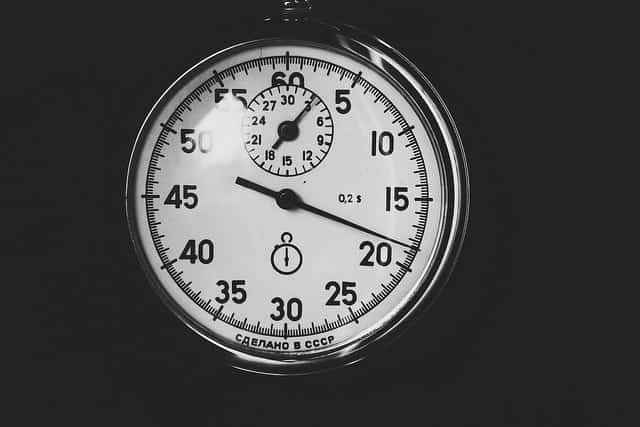Definition of Overtrading
If you look across the web, you will find many articles that cover the topic of overtrading; however, the information is related to a company selling more than it can produce. In this article, we will cover overtrading, as I know it, which is placing too many trades in the market.
One thing I want to ground everyone on before we get into the meat of the article is that overtrading is psychological. A key trait of successful traders is that they have a clear understanding of their relationship with money. Unresolved psychological issues can lead to financial ruin in the markets and the need to make more in an unrealistic time frame.
In this article, we will cover 7 methods for preventing overtrading. The goal is to provide you with enough insight into the triggers of overtrading, that you will be able to proactively police yourself, versus reacting to poor financial decisions.
#1 – After a Big Loss, Take a Break

Beach Resort
If you have just experienced a significant loss in the market, you are going through emotional pain whether you know it or not. To be clear, a big loss is relative to the trader. For some perfectionists, a big loss could be losing 2% on a trade or for the riverboat gamblers; it could be a larger figure.
Another way of saying this is that it’s not the size of the loss, but more the amount of emotional pain you have incurred.
The reason you want to take a break is you unknowingly will conjure up the need to make the money back. This will take the form of feeling wronged by the market or you may start to use pronouns such as “they” when speaking about how the market has wronged you.
What you need to realize is that the market does absolutely nothing without your permission. You are the master of your destiny and your trading results are only a mere reflection of your relationship with money.
However, when you view the market through the prism of other people have stolen my money or I need to get back what I’ve lost, you are on the brink of overtrading.
If I’m still not bringing this home, let’s look at it another way. Let’s say your account value went down from $100,000 to $60,000 in a few days, which is possible by the way.
If you still had $100,000 dollars, you would need to make 40% to make $40,000 dollars. However, if you are starting out with $60,000 you have to make 66%.
In addition, since you loss the money in a few days, you will undoubtedly have the expectation to make the money back quickly as well.
Let’s quickly recap, you will feel the need to work harder, because you have less funds and you want to make back your losses in relatively the same time frame you loss them.
Do you see now how you can begin overtrading? This is why although every fiber in your being will be pushing you to fix what’s broken but you must take a break.
You have to let the emotional scaring pass, so you do not start putting on trades for the sake of making things right. The break should last until you no longer feel the pain and the need to win back your money at all cost passes. For day traders, this may take a few days to a week to get out of your system. For swing traders this could be a month or more.
Bottom line, let time heal your wounds before you re-engage with the markets.
#2 – Only Trade a Set Number of Stocks per Day

Numbers
For day traders, this can be extremely difficult, as you may feel the need to trade the markets all day. I remember one day, I ended up placing nearly 50 trades and really for no reason. I had a rule to only trade 5 plays a day, but after taking a few losses in the morning, I just begin taking trades. At 4 pm, when I looked up from my computer, I felt like I just watched a movie of someone else starring as the main character and not myself.
As I was placing these trades, I knew I was wrong, but it was as if I was able to justify each trade in my mind, in real-time.
At the end of the day, I was up over a thousand dollars, but I remember feeling sick to my stomach.
Therefore, one way I have been able to fight the fact I could start over trading on a drop of a dime is to really honor my rule of only taking a maximum of 5 trades per day.
For you this number could be 100 trades a day, whatever the number is, just make sure you lock it down.
#3 – Set Profit and Loss Limits for the Day
Assuming you have ignored items #1 and #2, if you implement item #3, you may still be okay. So, let’s say you are just over trading and you can’t stop yourself from opening new positions. This next point is for you. You need to establish a set profit target or loss on the day, where you need to call it quits.
This limit has to be set based on looking at your trading results going back for a minimum of 3 months. For example, if your greatest day ever over a 90-day look back period is 5k and you hit 8k on a given day, you should likely close up shop.
Point is, these profit and loss limits on the day need to be based on real historical data and not hopes or fears.
The goal in trading is not to make money, but rather to not lose your money. If you are able to limit your losses and also set a profit target for the day where you say to yourself, that’s enough, then over time you will accumulate a nice war chest!
It’s not about limiting yourself, but it’s about knowing that if you keep trading, you are likely to give back some of or a good portion of your gains.
Now on the flip side, if you are losing money, then naturally you want to limit the amount of trades you place, as it just may not be your day. Therefore, having a maximum loss figure will prevent you from exaggerating a bad day because you can’t stop yourself from putting on more trades.
#4 – Limit the Number of Setups you Trade
Those that follow the Tradingsim blog know that I exclusively trade breakouts in the morning. Now, if you are open to any setup, at any given time of the day, this means you have an exponential number of trading opportunities.
For those of you that have mastered the ability to trade all day and any setup, please pat yourself on the back.
Now, to the rest of us mere mortals, you really need to focus on a few setups, as this will also help prevent overtrading.
The excessive trading kicks in because you are looking at filters and you see the lights flashing and without a solid trading plan for why you enter a position, the market will hold you within her grips. Before you know it, you are placing trades and you really can’t explain why.
Again, know the setups you trade and don’t try to trade every formation present in the market.
#5 – Limit How Long You Look At Filters
The long filter lists based on your trading criteria is a Godsend. It allows you to really focus your trade opportunities based on what the market is doing in real-time.
However, if you find yourself staring at the screen all day, watching the up and down ticks, at some point you will put on a trade. It sounds silly, I know, but it boils down to market psychology and that in your brain you feel you are missing out on the action.
So, instead of realizing it’s okay to stay on the sidelines, you will end up taking the plunge because of the pretty flashy lights on your screen.
Leave the action seeking to thrill-seekers and gamblers. You are a serious trader and don’t need the market to act as your adrenaline shot.
# 6 -Do not Trade All Day

Time
Trading is not like a 9 to 5 job. Placing trades all day does not mean that you are going to make more money. Trading is one of those things in life that you need to work hard at offline, but not necessarily in the market.
The reason being, is you need to strike while the iron is hot. So, it’s not about how many hours you work or how badly you want it, but rather you get things right when you are trading.
It took me over 20 months to realize that sitting in front of the computer from 9:30 am to 4:00 pm was actually losing me money. I would spend the afternoon giving back the healthy gains I had made in the morning.
So, pick a time frame of the day or the maximum number of hours you will trade. But please don’t sit at your computer unable to even take a bathroom break.
# 7 – Execute Your Trading Plan
Any trader that is actively engaged in the markets needs a trading plan. This doesn’t have to be some overly complicated list of items, but rather call out your step-by-step plan and limits for trading.
At its most basic level, the plan should layout your blueprint in such a way that overtrading isn’t even a possibility. After reading this article, you can see that a number of items we have listed are actually things that could go in your trading plan.
So, if you don’t currently operate based on a trading plan, please take the time to write one down and start using it today!
In Summary
Overtrading can be one of the many things holding you back from achieving significant trading results.
You have to be honest with yourself and at all costs fight your impulsive side that wants to dictate terms to the market.
If there isn’t a trade opportunity present, it’s okay to just observe. Sometimes sitting in cash is not only the best move, but the only move.
Much Success,
Al
Photo Credit
Beach Resort by Easy Tahiti Webmaster
Time by Veri Ivanova
Numbers by Katey










 Day Trading Basics
Day Trading Basics 
